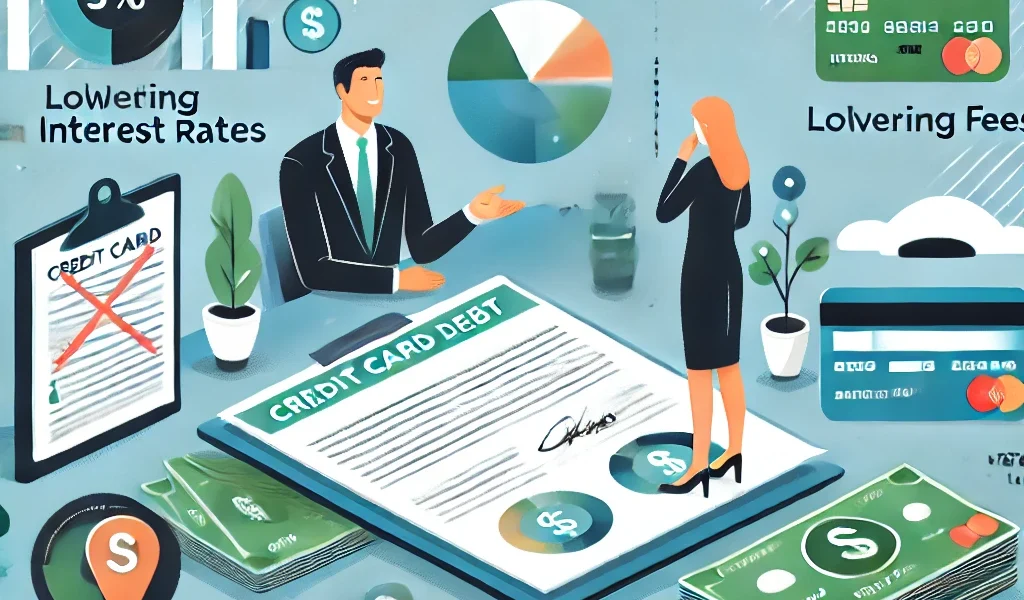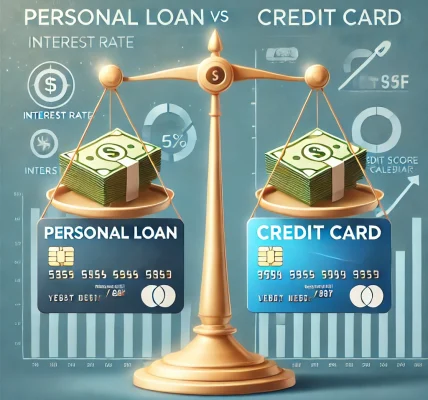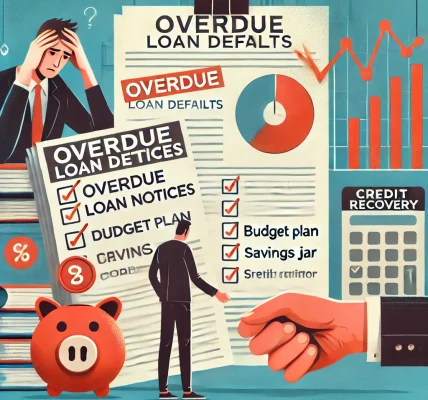Managing credit card debt can feel overwhelming, but negotiating your debt can help reduce payments, lower interest rates, and even settle balances for less than you owe. Credit card companies are often willing to work with you, but knowing how to negotiate effectively is key to getting the best outcome.
In this DIY guide, we will walk you through proven strategies to negotiate with credit card companies, reduce your payments, and take control of your financial future.
Understanding Credit Card Debt Negotiation
Negotiating credit card debt involves discussing new repayment terms with your lender. The goal is to make payments more manageable by reducing interest rates, waiving fees, or settling for a lower amount.
Common Negotiation Outcomes
- Lower Interest Rates – Reduce the percentage of interest on your outstanding balance.
- Fee Waivers – Remove late fees, annual fees, or over-limit charges.
- Debt Settlement – Pay a lump sum that’s lower than your total balance.
- Hardship Programs – Get temporary payment relief during financial hardships.
Let’s explore how you can successfully negotiate your credit card debt step by step.
Step 1: Assess Your Financial Situation
Before calling your credit card company, get a clear picture of your financial standing.
✅ Review Your Debt – Make a list of your outstanding balances, interest rates, and minimum payments. ✅ Check Your Budget – Determine how much you can realistically afford to pay. ✅ Know Your Rights – The Fair Debt Collection Practices Act (FDCPA) protects you from abusive collection practices. Be aware of what creditors can and cannot do.
Step 2: Contact Your Credit Card Company
Once you have a strategy, reach out to your creditor. Follow these best practices:
✅ Call the Customer Service Number – Ask to speak with a supervisor or the debt relief department. ✅ Be Polite but Firm – Explain your financial situation honestly but stay persistent. ✅ Take Notes – Keep records of the representative’s name, what was discussed, and any offers made.
What to Say
Here’s a sample script you can use:
“Hello, my name is [Your Name]. I am having financial difficulties and cannot keep up with my current credit card payments. I want to find a solution that works for both of us. Can you offer a lower interest rate or a hardship program to reduce my payments?”
Step 3: Negotiate the Best Deal
Depending on your situation, use one of these approaches:
1. Request a Lower Interest Rate
Interest rates significantly impact your payments. Ask if they can lower your APR (Annual Percentage Rate).
✅ Mention competitor offers with lower rates. ✅ Highlight your payment history (if it’s been mostly on time). ✅ If denied, ask when you can request again.
2. Ask for a Hardship Plan
If you’re experiencing financial hardship (e.g., job loss, medical expenses), many credit card companies offer hardship programs.
✅ These programs may lower your minimum payment, reduce your interest rate, or pause payments temporarily. ✅ Be prepared to provide proof of hardship if required.
3. Settle for Less Than You Owe
Debt settlement involves negotiating to pay a reduced lump sum instead of the full balance.
✅ Start by offering 30-50% of the total balance. ✅ If accepted, request a written agreement before making any payments. ✅ Be aware that settled debts may impact your credit score and could have tax implications.
Step 4: Consider Professional Help (If Needed)
If negotiations fail, consider working with a credit counseling agency or a debt settlement company. Be cautious of scams and choose reputable, nonprofit agencies.
✅ Credit Counseling – Helps set up a Debt Management Plan (DMP) to lower payments. ✅ Debt Settlement Companies – Negotiate settlements for you, but fees can be high. ✅ Bankruptcy – A last resort if other options fail.
Step 5: Follow Up and Stick to the Plan
Once you reach an agreement:
✅ Get It in Writing – Always request a written agreement before making payments. ✅ Make Payments on Time – Sticking to the new plan ensures no further damage to your credit. ✅ Monitor Your Credit Report – Ensure that agreed-upon changes are accurately reported.
Final Thoughts: Take Control of Your Debt
Negotiating your credit card debt can save you money, stress, and financial hardship. By taking proactive steps, you can reduce your payments and work toward a debt-free future.
✅ Stay informed and confident – Credit card companies want to get paid, so they’re often open to negotiation. ✅ Be persistent – If your first request is denied, try again or ask to speak to another representative. ✅ Seek help if needed – Credit counseling can provide additional support if negotiations don’t work.




